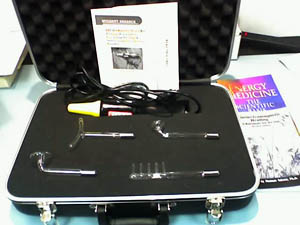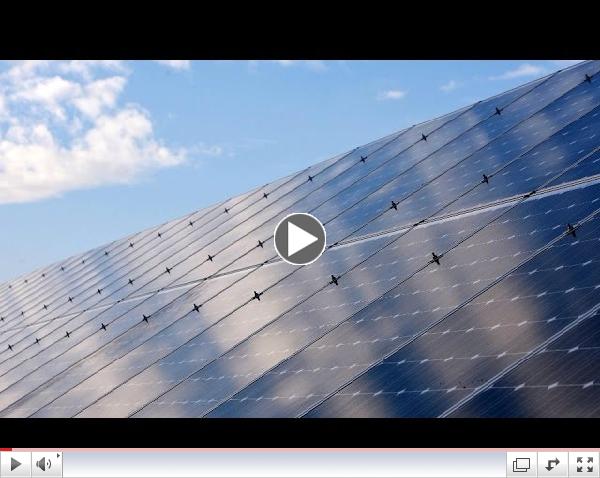|
|
|
Greetings!
One of my favorite heroes of the past is Nikola Tesla.
We recently learned that his best Documentary movie, told in the
first person and shown on the BBC, Discovery, and National Geographic
channels - "NIKOLA TESLA The Genius Who Lit the World,"
about one hour long if you skip the commercials, is now available
for FREE on YouTube ,
which is also available from
Amazon on DVD. I highly recommend showing students and
children this documentary about a forgotten genius that we owe so
much of our modern society to.
Speaking of Tesla, "one of the 10 most
fascinating people in the world" according to Encyclopedia
Britannica, his wireless transmission of electrical power still to
this day remains a mystery to 99.9% of the world scientists, except
for the very few that our institute has been fortunate to find. One
of these rare rising stars is Dr. Nick Simos from
Brookhaven National Labs who will be returning to COFE7 for
a joint session evening, explaining to the masses "The
Classical Approach to Tesla's Wireless Energy." Visit www.futurenergy.org to
register and to get more info.
COFE7 is also concurrent with
TeslaTech's ExtraOrdinary
Technology conference in the Albuquerque NM Embassy
Suites Hotel. Other great speakers on future energy are also on the
program, including yours truly.
This month we have another amazing collection of
breakthrough energy-related technologies including Story #1 which is
seen as a serious threat to oil (finally). The company, Ubiquitous
Energy, says it all with a company mission to put their
product everywhere, including on the windows of every
skyscraper...since it is TRANSPARENT. The short video is
worth watching. Their technology plans to make several appliances
battery-free with energy harvesting accomplished through the
see-through solar panels.
Story #2, thanks to BloombergBusiness, reveals Lawrence
Livermore's latest invention designed to solve the
world's billions of tons of waste CO2, now surpassing 400 ppm, in our
atmosphere. Using baking soda encapsulated in polymer bubbles,
tiny crystals that are permeable to CO2 can trap the gas so that it
can be safely released elsewhere, such as in a closed pipe system
where it can be pumped into the ground. The video is very
understandable and short. Hopefully this technology will be given the
fast track so that present fossil fuel energy products (say
"cars" or "smokestacks") can be retrofitted, much
like the catalytic converters are supposed to do.
Story #3 is also unveiling a breakthrough energy
technology heretofore unheard of...the Leidenfrost Effect as
captured by Northumbria
University in UK. The video once again says it all and
convincingly demonstrates the simple applications to power a rotary
device by solid CO2 (dry ice) which may be abundant on Mars by
harvesting the energy released by a barrier of vapor. "This is
the first time the Leidenfrost effect has been adapted as a way of
harvesting energy."
Story #4 explores the explosion in graphene for
wearables, which is of course also related to our IRI Bioenergetics
Program, and specifically for clothing, though a long intro explains
other energy-related applications. While pointing the reader to
the www.Wearable-Technologies.com the
real interesting development, in our view, is the http://www.wearable-technologies.com/2015/03/a-look-at-smartclothing-for-2015/ which
is a 10-page list of videos on wearable electronics clothing for
every conceivable application, except for electrotherapy which is
covered by the Panting
patent.
Story #5 is another breakthrough worthy of being a
headline story. It is the first time that PEMFs have been shown to
preserve milk without refrigeration! Published in
World Scientific's Technology journal,
intermittently delivered pulsed electric fields technology could
replace boiling and refrigeration of milk in the low-income
countries. Pulsed electric fields is an emerging technology in the
food industry. It was shown in multiple studies to effectively kill
multiple food born microorganisms and could provide an alternative,
non-thermal pasteurization process.
The extra Story #6 this month also breaks a record for
MIT's report in Technology Review on the world's largest and cheapest
desalination plant. Even California is paying attention where ground
water was called on NPR this week, "the Wild West" with no
regulation whatsoever. Also, this great demonstration of the future
of water, which is needed for many human activities and
energy-related production, comes on the heels of a U.N. report. If we
continue on our current trajectory, warns the report, we'll only have
60% of the water we need in 2030, without significant global policy
change, according to the new report
from the U.N.
Lastly, just a reminder to use http://smile.amazon.com/ when
you shop online and designate Integrity Research Institute for their
donations based on your purchase! Visit www.futurenergy.org for
more details about our upcoming 7th International Conference
on Future Energy(COFE7).
Sincerely,
Thomas
Valone, PhD, PE.
Editor
|
|
|
OUR LATEST CONFERENCE
COFE7
JULY 30-AUG 1, 2015
ALBUQUERQUE , NM


Osteoporosis? Our Newest Item
OsteoPad

EM Pulser
Our best selling device

PREMIER Jr.
Our best selling Tesla coil device

|
|
|
1) See-Through Solar is Tomorrow's Threat to Oil
|
By Sam
Grobart Bloomberg Business, March 2015
http://www.bloomberg.com/news/articles/2015-03-23/see-through-solar-is-tomorrow-s-threat-to-oil

Screens
and windows that soak up light could power your home or your phone
Solar
energy is the future. The problem is, it's been the future for a long
time. And while progress has been made, using the sun as a primary
source of power hasn't really broken through.
One
possible breakthrough, however, is becoming clearer-literally. The
engineers at Ubiquitous Energy are developing solar panels that are
completely transparent and as thin as a laminate. They can do this by
creating see-through solar cells that absorb only the invisible parts
of the solar spectrum-ultraviolet and infrared radiation.
Silicon Valley startup Ubiquitous Energy is making the
world's first transparent solar cells, a technology that could
greatly expand the reach of solar power. The invention is an
invisible film that can go on any surface and generate power, which
could lead to cell phones and tablets that never run out of
batteries. Their ClearView
PowerTM can be integrated directly into the surfaces of mobile
electronics as an auxiliary power source, with no degradation of
device function or display clarity.
Among
other applications, ClearView PowerTM can also serve as an
invisible, power-producing coating for windows, providing an onboard
power source for electronic window functionality or to offset energy
consumption in buildings. Ubiquitous Energy has won numerous awards
for their business and technology, including National Science
Foundation Small Business Innovation Research and Small Business
Technology Transfer grants, a Fraunhofer-Techbridge U-Launch Award, a
MassCEC MTTC Catalyst Award, and the MIT Clean Energy Prize
Renewables Category.
See
this video for more information.
|

|
|
Invisible Solar Cells That Could Power
Skyscrapers
|
The
technology still has a way to go because the cells must become
more efficient to prove cost-effective, but their promise is big:
solar cells that could become a part of any glass or plastic surface.
They could sit, invisibly, atop a smartphone's display, allowing the
phone to charge itself under natural or artificial light. And if the
process became part of glass and window manufacturing, homes and
skyscrapers could draw power from the sun without the spatial and
aesthetic limits of current, opaque solar panels.
If
solar is the future, transparent solar may be the future that
actually works.
RENEWABLES
INFRASTRUCTURE GROUP BUYS SOLAR POWER PLANT
SPRAY
ON SOLAR NANO CELLS
http://revolution-green.com/spray-transparent-solar-nano-cells/
MAKING FUEL FROM SUNLIGHT
http://www.technologyreview.com/news/535686/artificial-photosynthesis-takes-a-step-forward/?utm_campaign=newsletters&utm_source=newsletter-daily-all&utm_medium=email&utm_content=20150311
back to table of contents
|
2)
Carbon-Absorbing Nanobubbles Trap CO2
|
By Sam Grobart Bloomberg Business News
March 2015
http://www.bloomberg.com/news/articles/2015-03-16/these-tiny-bubbles-may-save-the-planet
Carbon-absorbing nanobubbles could be the key to
cutting greenhouse-gas emissions
 There are two ways to cut down on our
greenhouse-gas emissions: Reduce the amount we make or limit how much
of what we make actually gets into the atmosphere. There are two ways to cut down on our
greenhouse-gas emissions: Reduce the amount we make or limit how much
of what we make actually gets into the atmosphere.
It's
the second solution that researchers at the Lawrence Livermore
National Laboratory want to tackle with cute caviar-sized bubbles
that can absorb carbon dioxide.
The
polymer bubbles are filled with the entirely pedestrian ingredient of
baking soda, long known to absorb carbon dioxide, but it's the
bubbles themselves that are the breakthrough. They're permeable,
which means that CO2 gets trapped and absorbed by the baking
soda solution inside them. In theory, you could affix the bubbles to
the inside of a power plant smokestack and trap the CO2 before
it is released into the atmosphere
They're
also reusable. The CO2 can be released again by heating the
bubbles in a sealed container. The released CO2 can be kept in
tanks or safely pumped back underground while the bubbles can go back
into the smokestack and start their world-saving job all over again.
Bloomberg's
profile of Lawrence Livermore's carbon-capturing technology is the
latest installment of The Spark, which looks at innovators
finding solutions to seemingly unsolvable problems.
back to table of contents
|
3) Producing
Energy with Liedenfrost Effect
|
By mark dansie, Revolution-Green, March
20, 2015,
http://revolution-green.com/producing-energy-with-the-leidenfrost-effect/
 This effect is commonly seen in the way water
appears to skitter across the surface of a hot pan, but it also
applies to solid carbon dioxide, commonly known as dry ice. Blocks of
dry ice are able to levitate above hot surfaces protected by a
barrier of evaporated gas vapor. Northumbria's research proposes
using the vapor created by this effect to power an engine. This is
the first time the Leidenfrost effect has been adapted as a way of
harvesting energy. (see video) This effect is commonly seen in the way water
appears to skitter across the surface of a hot pan, but it also
applies to solid carbon dioxide, commonly known as dry ice. Blocks of
dry ice are able to levitate above hot surfaces protected by a
barrier of evaporated gas vapor. Northumbria's research proposes
using the vapor created by this effect to power an engine. This is
the first time the Leidenfrost effect has been adapted as a way of
harvesting energy. (see video)
The
technique has exciting implications for working in extreme and alien
environments, such as outer space, where it could be used to make
long-term exploration and colonization sustainable by using naturally
occurring solid carbon dioxide as a resource rather than a waste
product.
Mission
to Mars?
If
this could be realized, then future missions to Mars, such as those
in the news recently, may not need to be "one-way" after
all. Dry ice may not be abundant on Earth, but increasing
evidence from NASA's Mars Reconnaissance Orbiter (MRO) suggests it
may be a naturally occurring resource on Mars as suggested by the seasonal
appearance of gullies on the surface of the red planet. If utilized
in a Leidenfrost-based engine dry-ice deposits could provide the
means to create future power stations on the surface of Mars.
|

|
|
Mars
|
Dry
ice may not be abundant on Earth, but increasing evidence from NASA's
Mars Reconnaissance Orbiter (MRO) suggests it may be a naturally
occurring resource on Mars as suggested by the seasonal appearance of
gullies on the surface of the red planet. If utilized in a
Leidenfrost-based engine dry-ice deposits could provide the means to create
future power stations on the surface of Mars.
One
of the co-authors of Northumbria's research, Dr. Rodrigo
Ledesma-Aguilar, said: "Carbon dioxide plays a similar role on
Mars as water does on Earth. It is a widely available resource which
undergoes cyclic phase changes under the natural Martian temperature
variations.
"Perhaps
future power stations on Mars will exploit such a resource to harvest
energy as dry-ice blocks evaporate, or to channel the chemical energy
extracted from other carbon-based sources, such as methane gas.
The
team at Northumbria believe one of humanity's biggest challenges this
century will be finding new ways to harvest energy, especially in
extreme environments. It was this challenge which led them to develop
their proposed Leidenfrost Engine.
Dr.
Gary Wells, co-author of the paper, explains the unique properties of
an engine based on this phenomenon.
He
said: "The working principle of a Leidenfrost-based engine is
quite distinct from steam-based heat engines; the high-pressure vapor
layer creates freely rotating rotors whose energy is converted into
power without the need of a bearing, thus conferring the new engine
with low-friction properties."
As
well as potentially making long-term space exploration and
colonization more sustainable, the unique, low-friction nature of
this engine could have other exciting applications, according to
Executive Dean for Engineering and Environment, Prof. Glen McHale.
Prof. McHale, who also worked on the new research with Dr Wells and
Dr Ledesma-Aguilar, said: "This is the starting point of an
exciting avenue of research in smart materials engineering. In the
future, Leidenfrost-based devices could find applications in wide
ranging fields, spanning from frictionless transport to outer space
exploration."
Source: Northumbria Univ.
back to table of contents
|
4) Graphene
New Super Material for Wearables
|
By Floria Schumacher, Wearables.com
http://www.wearable-technologies.com/2014/10/graphene-superpowers-for-wearables/

Graphene
is the new super material in the tech industry and excites
researchers and product developers all over the world with its
unchallenged properties. Extremely thin, strong, flexible and
transparent, Graphene has an enormous potential to improve
processors, displays or batteries, all elements that are critical for
the performance of wearables. The nanomaterial is made of a single
layer of carbon atoms, which are bonded together in a hexagonal
pattern. First studied theoretically in the 1940s it took until 2004
that scientists at the University of Manchester were able to produce
the two-dimensional structure, a discovery that was honored with the
Nobel price. Since then, researchers are working on scaling the
Graphene production process in order to make the material available
for industrial applications. Even if it is still a couple of years
until we get there, here's how graphene could impact future
generations of wearables.
Transistors and
Microchips
Since
their invention in the 1940s, silicon transistors have constantly
been miniaturized so more of them can be packed into a microchip. In
order to improve performance, this trend will have to continue and
for silicon-based transistors the limits of miniaturization could be
reached in a couple of years. With its thickness of only one atom
layer, graphene could help to reach even smaller structures, making
the material a promising candidate for future
generations of microchips. On the other hand, the super material also
has an extremely low electrical resistance which means electrons can
move quickly and with little energy loss. This high conductivity in
graphene transistors might lead to much faster, energy efficient
processors. And because the nanomaterial is flexible, Graphene-based
chips enable new form factors such as foldable electronics, opening
up lots of opportunities for the wearables industry.
Flexible
Displays
Flexible
displays are on top of the wishlist when it comes to designing
wearables. Although LGhas already presented an 18-inch
OLED display that can be rolled up to a radius of 3 cm, an e-ink type
of display developed at Cambridge Graphene Center looks
even more promising for mass market applications. The researchers
have built an active matrix electrophoretic display by
"printing" Graphene electrodes on a plastic substrate. With
this simple production process, the Graphene based version might
become the first flexible display available at low costs, which is
significant to hit a reasonable price point for wearables. Based on
its initial research, Cambridge Graphene Center is already working on
a full-color version based on LCD and OLED technologies. The super
material Graphene shows potential not only for printing out pixels
but has many other applications in display manufacturing. Applied as
a coating, the transparent carbon layer could also turn all
kinds of displays into touch screens.
Batteries and
Solar Cells
Energy
supply is critical for the performance and the usability of
wearables. Thus, improvements in battery capacity and charging speed
will determine what wearables can do. Graphene, used as battery
electrodes, might significantly increase the capacity and charging
time. Compared to a Lithium Ion cell, scientists at Lawrence Berkely
Labs were able to double capacity by using graphene
oxide. The experimental design is still at an early stage, so a lot
of research is necessary before the new battery type might become
available for device manufacturers. Graphene not only can improve
energy storage, it also has the potential to change the way energy is
produced. The nanomaterial might be used to produce ultra-thin and
light solar cells and also increase the efficiency in converting
light into electrical energy.
Superpowers for
Wearables?
If
the development of Graphene based processors, displays, batteries and
other components turns out successful, this will have an enormous
impact on the performance and the design of wearables. Cheap,
flexible displays will enable totally new product forms and uses;
efficient microchips will allow to embed more processing speed in all
kinds of products. Powerful, graphene-based batteries and flexible
solar cells will help dealing with the ever increasing energy demand.
Given this potential its no wonder that the race for Graphene based
elements has already begun. Researchers all over the world are
working on overcoming technical hurdles and companies such as Samsung have already filed their
patents for production processes. It might take a couple of years
until we get to see graphene-based components but once the technology
hits the market, it could bring wearables to the next level.
back to table of contents
|
5) Pulsed
Electromagnetic Fields Preserve Milk
|
By Philly Lim, Press Officer World
Scientific. com March 23, 2015
http://www.worldscientific.com/page/pressroom/2015-03-23-01
Intermittently delivered pulsed
electric fields technology could replace boiling and
refrigeration of milk in the low-income countries

Milk
is a key element for household food security and provides a stable
income to farmers including women, who are usually in charge of
taking care of the milk-producing animals in the low-income
countries. Currently pathogen growth in milk is managed with
refrigeration or with chemicals. Although bacterial growth in milk is
managed with refrigeration in the high-income countries, a high cost
of infrastructure and a demand for a permanent electricity supply
prevent milk refrigeration in the rural areas in the low-income
countries. Moreover, certain pathogens, for example Listeria
monocytogenes, are less sensitive to low temperature; therefore, they
can proliferate at refrigeration during transportation and storage.
"There
is a constant search for new, low-cost, chemical-free technologies
for milk preservation, especially for the small farmers in the
low-income countries," says Alexander Golberg, PhD of Porter School
at TAU, the paper's author. "In many rural places refrigeration
is not possible and its alternative, lactoperoxidaze system may be
misused to disguise milk produced under poor hygienic conditions as
Codex Alimentarius. This development not only holds great promise for
unraveling many aspects of the complex wound healing process but can
also potentially lead to new therapies," Golberg says, " We
believe that this model will enable other laboratories to learn and
uncover new aspects of adult tissue growth and development."
Pulsed
electric fields is an emerging technology in the food industry. It
was shown in multiple studies to effectively kill multiple food born
microorganisms and could provide an alternative, non-thermal
pasteurization process.
"In
the storage application, developed in this work, we use the
fundamentally different approach for microorganisms control.
Refrigeration, the major milk preservation technology, slows the
bacteria metabolism, pulsed electric fields kill them." Alex Golberg
says. " Moreover, Our model shows that pulsed electric fields
preservation technology does not require a constant electricity
supply and can be powered 5.5 hours a day using small, family scale
solar panels. I believe that this technology can provide a robust,
simple and energy-efficient milk preservation system that would
decrease the wasted milk thus increasing the income of the small
farmers in developing countries."
The
author acknowledges Prof. Boris Rubinsky from UC Berkeley for the
active discussions about the work and for provision of part of
laboratory equipment for pulse electric field treatment. The author
acknowledges Prof. Daniel Portnoy and Dr. Chris Rae from UC Berkeley
for providing bacteria strains.
Corresponding
authors for this study in TECHNOLOGY are Alex Golberg (agolberg@gmail.com),
John H. Rossmeisl Jr. (jrossmei@vt.edu) and Michael B. Sano (sano@vt.edu).
back to table of contents
|
6)The
World's Largest, Cheapest Reverse-Osmosis Desalination Plant
|
By David Talbot, MIT Techonology
Review
http://www.technologyreview.com/featuredstory/534996/megascale-desalination/

The world's supplies of fresh water are
inadequate to meet the needs of a growing
population. Demonstrating that seawater desalination can
cost-effectively provide a substantial portion of a nation's water
supply is a breakthrough
On
a Mediterranean beach 10 miles south of Tel Aviv, Israel, a
vast new industrial facility hums around the clock. It is the world's
largest modern seawater desalination plant, providing 20 percent of
the water consumed by the country's households. Built for the Israeli
government by Israel Desalination Enterprises, or IDE Technologies,
at a cost of around $500 million, it uses a conventional desalination
technology called reverse osmosis (RO). Thanks to a series of
engineering and materials advances, however, it produces clean water
from the sea cheaply and at a scale never before achieved.
Worldwide,
some 700 million people don't have access to enough clean water. In
10 years the number is expected to explode to 1.8 billion. In many
places, squeezing fresh water from the ocean might be the only viable
way to increase the supply.
The
new plant in Israel, called Sorek, was finished in late 2013 but is
just now ramping up to its full capacity; it will produce 627,000
cubic meters of water daily, providing evidence that such large
desalination facilities are practical. Indeed, desalinated seawater
is now a mainstay of the Israeli water supply. Whereas in 2004 the
country relied entirely on groundwater and rain, it now has four
seawater desalination plants running; Sorek is the largest. Those
plants account for 40 percent of Israel's water supply. By 2016, when
additional plants will be running, some 50 percent of the country's
water is expected to come from desalination.
The
traditional criticism of reverse-osmosis technology is that it costs
too much. The process uses a great deal of energy to force salt water
against polymer membranes that have pores small enough to let fresh
water through while holding salt ions back. However, Sorek will
profitably sell water to the Israeli water authority for 58 U.S.
cents per cubic meter (1,000 liters, or about what one person in
Israel uses per week), which is a lower price than today's
conventional desalination plants can manage. What's more, its energy
consumption is among the lowest in the world for large-scale
desalination plants.
The
Sorek plant incorporates a number of engineering improvements that
make it more efficient than previous RO facilities. It is the first
large desalination plant to use pressure tubes that are 16 inches in
diameter rather than eight inches. The payoff is that it needs only a
fourth as much piping and other hardware, slashing costs. The plant
also has highly efficient pumps and energy recovery devices.
"This is indeed the cheapest water from seawater desalination
produced in the world," says Raphael Semiat, a chemical engineer
and desalination expert at the Israel Institute of Technology, or
Technion, in Haifa.
"We
don't have to fight over water, like we did in the past."
Australia, Singapore, and several countries in the Persian Gulf are
already heavy users of seawater desalination, and California is also
starting to embrace the technology (see "Desalination Out of Desperation").
Smaller-scale RO technologies that are energy-efficient and
relatively cheap could also be deployed widely in regions with
particularly acute water problems-even far from the sea, where
brackish underground water could be tapped.
Earlier
in development are advanced membranes made of atom-thick sheets of
carbon, which hold the promise of further cutting the energy needs of
desalination plants.
RELATED ARTICLE
http://www.bloomberg.com/news/articles/2014-04-23/saudis-start-production-at-world-s-biggest-desalination-plant
back to table of contents
|
About
Integrity Research Institute
Future Energy eNews is provided as a public
service from Integrity Research Institute, a Non-Profit dedicated
to educating the public on eco-friendly emerging energy
technologies.
FREE
copy of
the 30 minute DVD "Progress in Future Energy" is
available by sending an email with "Free DVD" in
subject and mailing address in body.
Your generous support is welcome by making a tax
deductible donation on
our secure website
|
|
|
|
|
|
![]()





















